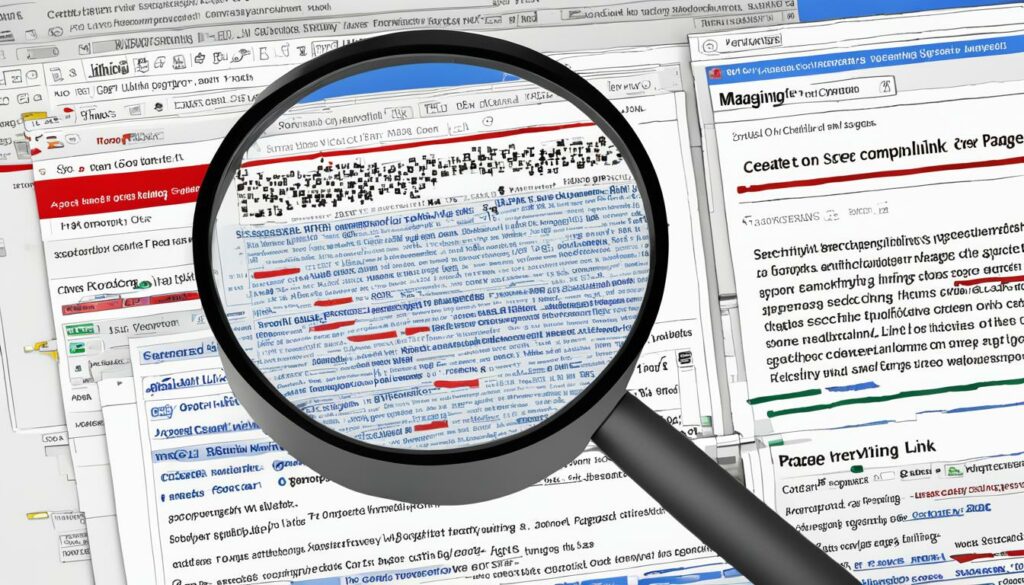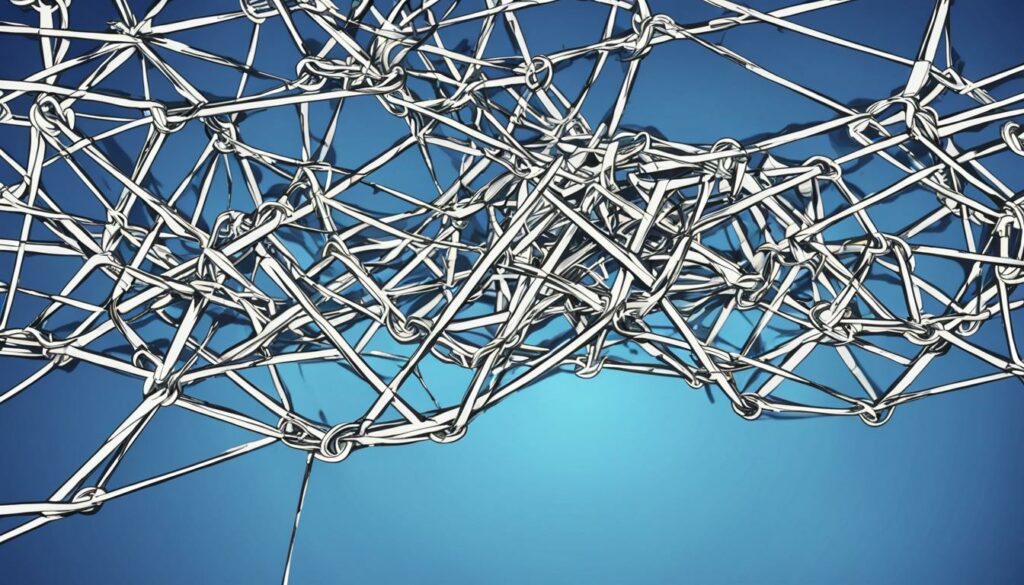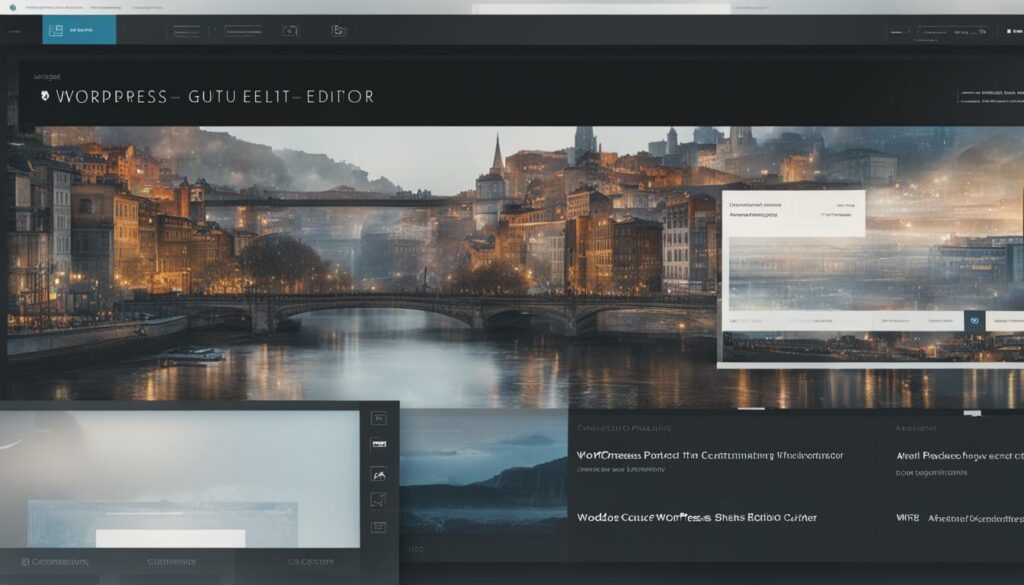Welcome to our guide on decoding 404 Not Found errors and how to fix broken links. If you’ve ever encountered a website error message like “404 Page Not Found,” you know how frustrating it can be. But did you know that broken links can impact more than just your website’s usability? In this article, we’ll explore the causes and consequences of broken links and provide you with practical solutions to resolve 404 errors.
First, let’s understand what a broken link is. A broken link is a hyperlink or web page that users cannot find or access. When clicked, it leads to a 404 error page. While 404 errors may not directly impact SEO, they can result in a high bounce rate and a poor user experience.
In the following sections, we will delve deeper into the causes of broken links, their impact on SEO and user experience, and how to check for and fix them effectively. We will also discuss the importance of a custom 404 page and provide you with valuable tools and methods for handling broken links.
Key Takeaways:
- Broken links can lead to a high bounce rate and a poor user experience.
- Causes of broken links include link rot, deleted pages, incorrectly formatted URLs, changes in website structure, broken images, and domain name changes.
- Fixing broken links is crucial for maintaining a good user experience, preserving SEO ranking, and protecting your brand’s reputation.
- Tools like web crawlers, browser extensions, and Google Search Console can help you identify and fix broken links on your website.
- Prioritize fixing broken links that impact crucial pages and the overall user experience.
Now that you understand the importance of fixing broken links, let’s dive into the causes and solutions in the following sections.
What Causes Broken Links
Broken links can occur due to various reasons. Understanding these causes is essential for effectively addressing and preventing broken links on your website. The following are common causes of broken links:
- Link Rot: This happens when the content being linked to is moved or deleted over time. As a result, the link becomes broken, leading to a 404 error page.
- Deleted Pages: When a linked page is removed or deleted, the link pointing to it will result in a broken link and display a 404 error page.
- Incorrectly Formatted URLs: Links with misspelled or mistyped URLs can lead to 400 bad request errors. These errors occur when the server cannot understand the request due to URL formatting issues.
- Change in Website Structure: Modifying the structure of your website, such as moving or renaming pages, can cause existing links to break. Hardcoded links that don’t reflect the updated structure will result in broken links.
- Broken Images: When the image file linked on a webpage is moved or deleted, the image will not display, resulting in a broken image link.
- Domain Name Change: If a website undergoes a domain name change, links pointing to the old domain will become broken. This often happens during rebranding or website migration.
To visualize the causes of broken links, refer to the table below:
| Cause | Description |
|---|---|
| Link Rot | Content being linked to is moved or deleted |
| Deleted Pages | Linked page is removed or deleted |
| Incorrectly Formatted URLs | Misspelled or mistyped links result in bad request errors |
| Change in Website Structure | Modifying the website structure, causing hardcoded links to break |
| Broken Images | Moved or deleted image files result in broken image links |
| Domain Name Change | Links pointing to old domain become broken after a domain change |
Understanding the causes of broken links will help you prioritize and address them effectively, ensuring a seamless user experience on your website.
The Importance of Fixing Broken Links
Fixing broken links is crucial for maintaining a good user experience on your website. When users encounter broken links, it can lead to frustration and a poor impression of your brand. They may leave your site without further exploration, resulting in a high bounce rate.
From an SEO perspective, broken links can have a negative impact on your site’s ranking. Search engines like Google consider broken links as a sign of poor maintenance and may lower your site’s overall SEO ranking.
Moreover, broken links can erode trust with your audience and harm your brand’s reputation. Users expect a seamless browsing experience, and encountering broken links can make them question the reliability and professionalism of your website.
“Maintaining a functional and attractive 404 error page is essential to preserve user experience and brand image.” – BoostedHost
By promptly fixing broken links and ensuring a functional and attractive 404 error page, you can enhance user experience and preserve your brand’s reputation. It is essential to provide clear navigation options and helpful information to users when they encounter a broken link. This not only helps retain users on your site but also shows that you care about their experience.
By fixing broken links, you can:
- Improve user experience by providing a seamless browsing journey
- Reduce bounce rate and increase user engagement
- Enhance your site’s SEO ranking by demonstrating good maintenance practices
- Preserve your brand’s reputation and build trust with your audience
Remember, maintaining a well-functioning website requires regular checks for broken links and prompt fixes whenever they are found. Sign up for WordPress Hosting from BoostedHost to ensure optimal performance.

| Impact of Broken Links | User Experience | Bounce Rate | SEO Ranking | Brand Reputation |
|---|---|---|---|---|
| Positive | Negative | Negative | Negative | Negative |
| Fixing broken links enhances user experience by providing a seamless browsing journey. | Broken links frustrate users and lead to a high bounce rate. Users may leave your site without exploring further. | Search engines consider broken links as a sign of poor maintenance, potentially lowering your site’s SEO ranking. | Broken links erode trust with your audience, negatively impacting your brand’s reputation. |
How to Check for Broken Internal Links
Checking for broken internal links on your website is an essential task to ensure a smooth user experience. By identifying and fixing broken links, you can prevent users from encountering frustrating “404 Not Found” error pages. Here are several methods you can use to check for broken internal links:
Web Crawlers
Web crawlers, such as the Screaming Frog SEO Spider, can scan your entire site and provide detailed reports on broken pages and internal links. These tools automatically crawl through your website, identifying any URLs that lead to a “404 Not Found” error. This method is particularly useful for large websites with numerous pages to check.
Manual Checks
Performing manual checks is another effective way to identify broken internal links. Visit representative pages on your website and click on the links to see if they lead to the intended destination. Make a note of any broken links you encounter, and take the necessary steps to fix them.
Browser Extensions
Browser extensions like Ahrefs Toolbar or “Check My Links” can be handy tools for identifying broken links directly within your web browser. These extensions scan web pages for broken links and highlight them, making it easy for you to identify and fix problematic links without leaving your browser.
Google Search Console
Google Search Console is a powerful tool that can help you find broken internal links on your site. This free service provides reports on indexing issues and broken URLs. By regularly monitoring the Search Console, you can identify broken pages and take the necessary steps to fix them for optimal website performance.

Implementing these methods will help you identify and fix broken internal links on your website, ensuring a seamless user experience and improving your site’s overall performance.
How to Fix Broken Links
Once broken links are identified, they need to be fixed promptly. The appropriate fix depends on the type of broken link. Here are some effective strategies:
- For internal broken links, you can update them to the correct URLs or remove them if they no longer serve a purpose.
- Redirecting broken pages using 301 redirects is another option. This ensures that users are directed to relevant new pages.
- Having a custom 404 error page is essential to provide a good user experience when users encounter broken links. This page can guide users to other relevant sections of your website or offer helpful suggestions.
- Prioritizing fixes is important to allocate resources effectively. Focus on fixing broken links that impact crucial pages or contribute to a poor overall user experience.
If you’re using WordPress, we recommend WordPress Hosting from BoostedHost for optimal performance. Sign up now through this link: www.boostedhost.com/wordpress-hosting.

By following these steps, you can fix broken links on your website and ensure a smooth browsing experience for your users.
The Impact of Broken Links on SEO
Broken links can have a significant impact on your website’s SEO performance. When search engines like Google crawl your site, they analyze the quality and functionality of your web pages, including the presence of broken links. The presence of broken links can negatively affect how search engines perceive your site’s overall quality, which in turn can affect your SEO ranking.
One of the key aspects search engines consider when evaluating a website’s quality is the presence of crawl errors. Broken links, also known as crawl errors, can signal to search engines that your site is not properly maintained or up-to-date. If search engines encounter too many broken links during the crawling process, it may lead to reduced crawling of your website, meaning that not all of your pages will be indexed and ranked. As a consequence, this can result in a lower overall SEO ranking for your site, making it harder for your web pages to appear prominently in search engine results pages.
Another important aspect to consider is the wasted link authority that occurs with broken links. Link authority refers to the value and trust passed from one page to another through internal linking. When you have broken links on your site, the internal links pointing to those broken pages do not pass on their authority effectively. This wasted link authority can impact the overall SEO performance of your site, as search engines rely on internal linking for determining the relevance and importance of web pages.
To maintain good site quality and ensure proper crawling and indexing by search engines, it is crucial to fix broken links promptly. By fixing broken links, you improve the user experience on your website, provide accurate and relevant information to visitors, and enhance the overall navigation of your site. This demonstrates to search engines that your site is well-maintained and offers valuable content, which can positively impact your SEO performance.

Impact of Broken Links on Site Quality and SEO Ranking
In summary, broken links can have detrimental effects on your site’s quality and SEO ranking. The presence of broken links can indicate poor maintenance and negatively impact how search engines perceive the overall value of your website. It can result in reduced crawling and a lower SEO ranking, as well as wasted link authority that diminishes the impact of your internal linking efforts.
| Effects of Broken Links on SEO: | |
|---|---|
| Broken links can decrease your site’s quality perception by search engines | |
| Too many broken links may result in reduced crawling and a lower SEO ranking | |
| Wasted link authority can diminish the impact of internal linking efforts |
It is important to regularly check for and fix broken links on your website to ensure optimal site quality, improve your SEO ranking, and provide a seamless user experience. By addressing broken links promptly, you can enhance the credibility and reliability of your website, improve user engagement, and ultimately drive more organic traffic to your site.
The Impact of Broken Links on User Experience
Broken links have a significant impact on user experience. When users encounter broken links, it can lead to frustration and a sense of untrustworthiness.
The sequel follows the user frustration that arises from clicking on a broken link, expecting to find valuable information or a desired product, only to be met with a dead end. This experience can leave users feeling disappointed and dissatisfied with your website.
Imagine this scenario: You are browsing a website, looking for specific information. You click on a link that appears to lead you to the desired content, but instead, you are greeted with a 404 error page. How would you feel?
“404 Page Not Found.”
It’s frustrating, right? You might question the reliability and credibility of the website. After encountering multiple broken links, you might even decide to abandon the site altogether and look for information or products elsewhere.
Site abandonment due to broken links can have a detrimental effect on your brand’s reputation. Users expect a seamless and trustworthy experience when they visit your site. If they consistently encounter broken links, it erodes their trust in your brand.
Trust is an essential component of any successful online business. It takes time and effort to build trust, but it can be lost in an instant when users encounter broken links on your site.
The Importance of Trust
Trust is crucial for establishing long-term relationships with your audience. When users trust your brand, they are more likely to engage with your content, make purchases, and become loyal customers. On the other hand, broken links can create a negative perception of your brand, leading to missed opportunities and potential customers choosing your competitors instead.
Providing a smooth and seamless user experience by fixing broken links is essential. By ensuring that all links on your website lead to relevant and accessible content, you can build trust with your users and keep them engaged.
| Impact of Broken Links on User Experience | Actions |
|---|---|
| User Frustration | Fix broken links promptly to prevent user frustration |
| Trust | Maintain user trust by ensuring all links lead to reliable content |
| Site Abandonment | Prevent abandonment by providing a seamless browsing experience |
Fixing broken links not only improves user experience but also helps in retaining potential customers and safeguarding your brand’s reputation. It is crucial to regularly check your website for broken links and promptly address them to ensure a positive and trustworthy user experience.
Continue reading to discover tools and methods for finding and fixing broken links in the next section.
Tools for Finding and Fixing Broken Links
When it comes to finding and fixing broken links on your website, several useful tools are available. These tools can help you efficiently identify and resolve any broken links, ensuring a seamless user experience. Let’s explore some of these tools:
Web Crawlers
Web crawlers, such as the Screaming Frog SEO Spider, are powerful tools that scan your entire website and generate detailed reports on broken pages and links. They crawl through your site’s structure, providing valuable insights on any broken links that need attention.
Google Search Console
Google Search Console is a free tool provided by Google that allows you to monitor indexing issues and identify broken URLs on your site. It provides essential reports and notifications, helping you stay on top of any broken links and take appropriate action.
Browser Extensions
Browser extensions like Ahrefs Toolbar and “Check My Links” can be handy for scanning web pages and highlighting broken links. These extensions integrate seamlessly with your browser, making it easy to identify and fix any broken links you come across.
Using a combination of these tools can greatly assist you in efficiently finding and fixing broken links on your website. By regularly checking for broken links and actively resolving them, you can enhance the overall user experience and maintain a high-quality website.
Manual Checks and Prioritization
If you have a smaller website or want to focus on specific pages, manual checks can be an effective method for identifying broken links. While it may be time-consuming, this approach allows for a more targeted analysis. Take the time to review each page and click on the links to check for any errors.
Once you have identified broken links, it is important to prioritize the fixes to allocate resources efficiently. Give priority to fixing broken links that impact crucial pages or have a significant impact on the overall user experience. By prioritizing these fixes, you can ensure that your website remains functional and user-friendly.
An important aspect of managing broken links is creating a custom 404 error page. When users encounter a broken link, a well-designed and informative 404 page can help guide them to relevant content or provide alternative navigation options. This custom page not only improves user experience but also helps manage broken links effectively.
Remember, manual checks, prioritizing fixes, and implementing a custom 404 page are essential steps in managing and resolving broken links on your website.
Validating and Ensuring Fix Success
After fixing broken links, it is crucial to validate the fixes and ensure their success. This validation process may take some time as Google Search Console periodically updates its data. To track the progress of the fixes, we recommend monitoring changes and checking the last crawled date in Google Search Console.
Regularly checking Google Search Console is key to achieving successful fixes. Although the validation process can take weeks or even months, your patience will be rewarded with a fully functional and error-free website.
| Validation Process Steps | Description |
|---|---|
| Step 1: Monitor changes | Keep an eye on Google Search Console for any updates or changes in the status of your fixed broken links. |
| Step 2: Check the last crawled date | Regularly check the last crawled date in Google Search Console for each fixed link. This date gives you an idea of when Google last visited the page associated with the fixed link. |
| Step 3: Be patient | Remember that the validation process can take time, especially for larger websites. Google Search Console takes its time to update the data, so give it some time to reflect the fixes made. |
By following these steps and regularly checking Google Search Console, you can ensure that your fixed broken links are validated and working smoothly. Remember, patience is key in this process.
Conclusion
Understanding and fixing broken links is crucial for maintaining a high-quality website and providing an optimal user experience. Broken links can harm your site’s SEO performance, user trust, and brand reputation. By decoding 404 Not Found errors and using the tools and methods mentioned in this guide, you can efficiently identify and fix broken links on your site.
Prioritizing fixes and regularly checking for broken links will help ensure a smooth and enjoyable experience for your website visitors. Remember that a seamless browsing experience is essential for user satisfaction and engagement. Take the necessary steps to fix broken links promptly to avoid frustrating your users and losing potential customers.
We recommend BoostedHost’s WordPress Hosting for optimal performance. Sign up now through this link: www.boostedhost.com/wordpress-hosting. BoostedHost provides reliable hosting solutions that can help you maintain a high-quality website with minimal downtime and fast loading times. Start enhancing your website’s performance today and provide an optimal user experience for your visitors.
FAQ
Q: What is a broken link?
A: A broken link is a hyperlink or web page that users cannot find or access. When a broken link is clicked, a 404 error page is displayed.
Q: What causes broken links?
A: Broken links can occur due to various reasons, including link rot, deleted pages, incorrectly formatted URLs, changes in website structure, broken images, and domain name changes.
Q: How do broken links impact my website?
A: Broken links can lead to a high bounce rate and a poor user experience. While they may not directly impact SEO, they can negatively affect your brand’s reputation and user trust.
Q: How can I check for broken internal links?
A: You can check for broken internal links using web crawlers like the Screaming Frog SEO Spider, manual checks by visiting representative pages, browser extensions like Ahrefs Toolbar or “Check My Links,” and Google Search Console.
Q: How do I fix broken links?
A: To fix broken links, you can update them to the correct URLs, remove them if they no longer serve a purpose, or redirect broken pages using 301 redirects. It is also important to have a custom 404 error page.
Q: What is the impact of broken links on SEO?
A: Broken links can negatively impact your site’s quality and SEO ranking. They also waste link authority and hinder proper crawling and indexing by search engines.
Q: How do broken links affect user experience?
A: Broken links can frustrate users and lead to a high bounce rate. They can erode user trust and harm your brand’s reputation if users consistently encounter broken links on your website.
Q: What tools can I use to find and fix broken links?
A: You can use web crawlers like the Screaming Frog SEO Spider, Google Search Console, and browser extensions like Ahrefs Toolbar and “Check My Links” to find and fix broken links.
Q: How should I prioritize fixing broken links?
A: Prioritize fixing broken links that impact crucial pages and user experience. Also, consider having a custom 404 page to manage broken links and provide users with a helpful navigation option.
Q: How can I validate and ensure the success of fixed broken links?
A: It is recommended to monitor changes in Google Search Console and check the last crawled date to track the progress of the fixes. Validating fixed broken links may take weeks or months.












